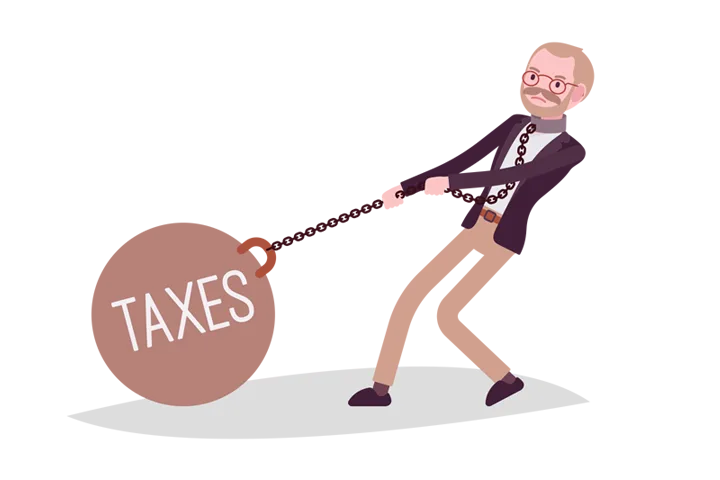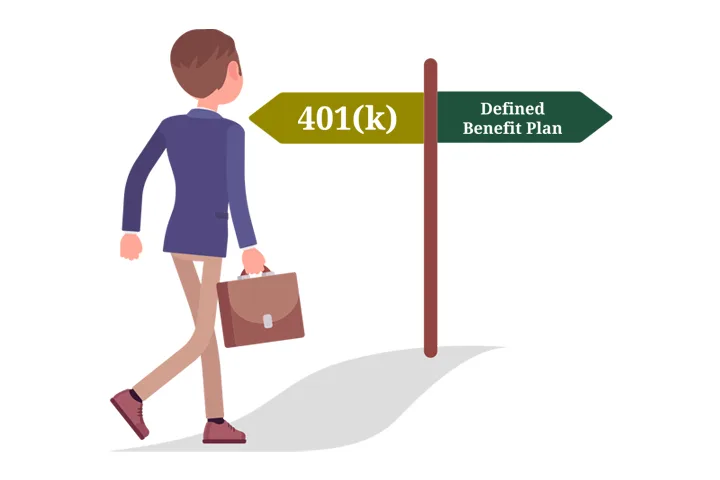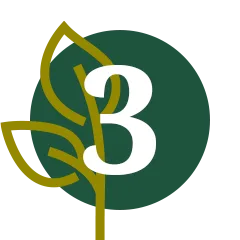Most high-income professionals and business owners get hit with significant income tax bills each year.
Of course, individuals in this category, such as physicians, law firm partners, engineers, consultants and business founders or high-level business executives are the fortunate minority to be in such a high-income category in the first place.
Still, no one likes to pay more taxes
than necessary.

What amount of income does it take to be in this high-income category?
If you make an annual income of $300,000 or more (even into the millions) per year – then read on below as we explain how setting up and using an advanced retirement planning option.
What is a Defined-Benefit Plan?
It’s a type of retirement plan called a defined benefit plan (also known as a cash balance plan) that could save you hundreds of thousands per year in your annual income tax bill as well as give you an opportunity to vastly accelerate your savings for retirement.
It gets even better, if invested well, a defined benefit pension plan can also create you an additional wealth building from tax-deferred growth of your contributions. This is how setting up the right defined benefit or DB plan could result in millions of dollars in additional savings and earnings.
This means that done right – you can enjoy the peace of mind that comes from having a higher income distribution in your retirement years or even being able to retire comfortably far earlier than without it.
Read on below as we explain the details of how these plans work and how you can set one up to benefit!
Introduction to Defined-Benefit Plans
Why does the government allow businesses to set up defined benefit plans with such powerful benefits for business owners and their high-income partners?
One of the reasons is that government policy recognizes that it is preferable to have individuals incentivized to be prepared for their own retirement years rather than being dependent on public welfare.
Since high income business owners and partners typically have higher earnings and expenses in their earning years, tax policy recognizes that they might need tools to save higher amounts from their incomes to create the replacement income they will need to sustain into their retirement years as well.

Of course, retirement plan non-discrimination rules also require some of the benefits to be shared with other less highly paid employees as well. However, in the right situations, the defined benefit plan option can be very beneficial for the key high-income employees and owners of a closely held business.
Defined Benefit Plan Set Up
Each defined benefit plan (just like all other retirement plans including 401(k) plans) is a legal entity distinct from the business that sets it up and is also separate from the individual participants in the plan.
A new retirement plan like a defined benefit plan is set up via a plan document that outlines the terms and provisions of that plan.
Since plan documents involve some complexity, most plans are drafted by experienced advisors like a third party administrator working with an experienced CPA and/or financial advisor to the employer.
A plan trustee (typically someone affiliated with the employer) then “adopts” the plan document thereby creating the new plan.
Defined Benefit Plans are Separate and Protected Assets
In 1974, the US Congress passed a law called the Employee Retirement Income Security Act (ERISA) for short. ERISA outlines a variety of rules, regulations and protections that protect retirement and pension assets such as Defined Benefit Plans.
As a separate entity, the new retirement plan usually has its own tax identification number and its assets and liabilities are distinct from those of the business that it is affiliated with such that any funds held in the retirement plan cannot be commingled with or used for the assets or liabilities of the business.
What this means is that even if the business later fails or has debts to its creditors, the assets in the retirement plan that were set aside for the retirees should still be untouched and available to provide them the retirement income from their assets.
As an additional line of defense, a quasi- government agency called the Pension Benefit Guaranty Corporation or PBGC for short assesses insurance premiums on all such pension plans and steps in to provide a safety net for the small number of covered pension plans that end up getting into trouble usually because of mismanagement or underfunding of the plan.
This means that DB plans can be
relatively safe places to have funds invested for you.
One major additional benefit of DB plans as a result of ERISA is that plan assets in retirement plans are typically protected not only from the employer’s creditors, but also from the individual employee’s creditors as well.
So in addition to all the above benefits of defined benefit plans, high income individuals especially those in fields that have professional liability exposure can also benefit from setting up a DB plan to enjoy asset protection benefits protecting any assets placed into their defined benefit plans.

Defined Benefit Plans vs 401(k) Plans
Though both are types of retirement plans, Defined Benefit (DB) Plans are different from Defined Contribution (DC) Plans like 401(k) and 403(b) plans. The differences stem from how these plans work and how their benefits are calculated as well as the maximum contributions allowed.
Unfortunately, many business owners and high-income professional firms and their CPAs are more aware of SEP IRAs and solo or traditional 401(k) plans than they are about how and when to properly set up and use a DB plan structure.
Although 401(k) type retirement plans are also good tools for retirement savings, they have lower annual deductible contribution limits than defined benefit plans.
The main difference is that in a defined contribution (DC) plan such as a 401(k) plan each employee gets to decide how much they want to save for their own retirement (if any). This is most commonly done by choosing to save a certain percentage of their salary.
The main burden is therefore on each employee to save for their own retirement. Those employees who contribute more eventually get the greater income benefit, those who don’t will not get much if any benefit in retirement.
Also, with defined contribution and 401(k) plans there is a lower maximum limit to the employee contributions.
Though it increases every few years to account for inflation, in 2024, the employee contribution to a 401(k) plan is a maximum of $23,000 from salary deferrals – though someone who is 50 or older can contribute an additional “catch-up” contribution amount of $7,500 in 2024 bringing the total employee contribution limit to $30,500
In addition to the employee contribution, the employer can also contribute either a “matching” contribution or a profit sharing contribution, so the total maximum employee plus employer contribution into a 401(k) profit sharing plan in 2024 is $69,000 for those under 50 and $76,500 for anyone 50 or over.
Note that this employer contribution portion is optional and varies company by company depending on how they decided to set up their retirement plan benefit in the first place.
In contrast to the 401(k) Defined Contribution plans, however, in a Defined Benefit Plan, the contribution amounts and tax savings can be much larger for the owners and key employees.
The reason is that it is the benefit or stream of retirement income promised to the beneficiaries at retirement age (not the contribution) that is used to determine how much needs to be contributed to fund a DB plan.
To calculate contributions to a DB plan, an actuary analyzes the employee “census”, i.e. the list of the employees, their age, their salaries and hire dates. Based on this information and the retirement income formula that the plan is promising to provide for the employees after they reach retirement age, the employer then makes tax-deductible contributions to the plan that will be sufficient (along with future projected investment returns on plan assets) to fully fund and pay the benefit promised to participants.
If this sounds familiar, it should. Defined Benefit plans are not new. In fact, they are much older than 401(k) and other DC plans.
They are, in essence, just a version of the traditional pension plans larger companies like General Motors and Verizon and various unions, and government employers used to set up for their employees and sometimes still do.
However, as the costs of contributions to traditional pension plans continued to increase and many plans became underfunded, many large companies decided to cut off their DB pension plan benefits and shifted the responsibility and liability onto their employees by setting up 401(k) plans instead.
For smaller but highly profitable firms, however, if the plan is properly designed and administered, the benefits to the partners can far outweigh the costs of providing the benefit to other qualified employees.
If the total number of non-highly compensated or non-owner employees and their relative compensation is manageable relative to the owners and professionals, then DB plans can work particularly well. Age also matters in this analysis – if the non-key employees (on average) are young relative to the partners the math on these plans tends to work well. One of the best scenarios is for “top-heavy” companies with a handful of highly compensated owners/executives and few or no other supporting employees (or much younger ones).
Another key difference between 401(k) plans and defined benefit plans is how and by whom the plan assets are to be invested.
In a 401(k) plan the employer or their plan provider sets up a limited menu of investment options (typically a handful of diversified mutual funds) to choose from in the plan. Each employee then decides how they individually want to invest their own portion of the plan (based on their own contributions as discussed above).
Each employee therefore has their own “account” within the 401(k) plan that they can view and invest using the limited options provided by the plan sponsor. If their account is conservatively or badly invested the responsibility is largely on them.
In contrast, in a defined benefit plan it is the responsibility of the employer to manage the assets of the plan such that the plan can meet its obligations to provide the benefit streams promised to employees.
If the plan is overfunded, the employer benefits from the excess surplus and if it is underfunded the employer is responsible to contribute more to make up for the shortfall. In choosing investments, the DB plan has far more options and can invest in all public and some private investments as well which means thousands of stocks, funds, and even bonds are eligible investments.
This is why many DB plans have advisors or experienced individuals managing the plan assets who know how to navigate the myriad of investment options available.
The first step in figuring out what type of retirement plan would be most beneficial to your own company is to gather a current employee census (Ridgewood Investments has a free employee census template we can provide upon request). Based on an analysis of the census, an experienced advisor can help you to determine if you are a good candidate for a DB plan or a DC plan or both.
Note that many DB plans are set up side by side with a 401(k) component because this type of plan (often called a cross-tested plan) can create the greatest benefits and flexibility for all concerned.
Clearly, defined-benefit and cash balance retirement plans can be extremely powerful tools. They allow for large, sometimes enormous tax-deductible contributions that are able to produce tax-deferred growth and the assets can also eventually be rolled over into an individual’s IRA account upon retirement.
If the high-income business owner has no or very few employees, the owner can deposit the entire amount to fund his or her own retirement. Even with employees, the percentage of contributions allocated to the owner(s) can be as high as 80% to 90% of the total contributed (all tax deductible) to the business.
Some of the types of small businesses that are good candidates for a defined-benefit plan include medical and dental practices, legal firms, engineering and consulting businesses and some online or niche entrepreneurial firms.
How to Set Up a Defined Benefit Plan for a Business
Setting up a defined-benefit plan for a small business is more involved than opening up a personal IRA or contributing to a 401K. But, because of their powerful advantages for high income professionals and owners the cost and complexity can be well worth the effort.
Here are the steps involved:

Step 1
Enlist the help of a financial professional like Ridgewood Investments who is experienced in helping set up and invest retirement plan assets and put together an employee census.

Step 2
Decide which third-party administrator (TPA) to use for the plan. If you don’t use a TPA you will have to do the administration tasks yourself and, in most cases, the complexity and liability exposure makes it better to outsource administration to an experienced external administration firm. Ridgewood can work with your preferred TPA or help introduce you to an experienced TPA firm for your new plan.

Step 3
Draft a defined-benefit plan document that fits your situation and retirement goals. Select a trustee and adopt the new plan document.

Step 4
Make the contributions each year by the annual due date which is your business tax filing deadline including extensions. The amount of your contributions each year will be calculated by an actuary based on various factors including the growth of assets and can vary somewhat year to year.

Step 5
Start investing the plan assets in a diversified mix of investments. One common mistake on the investment side is to be too conservative in an effort to maximize contributions for the tax deduction. Low returning investments like annuities and life insurance policies are not always the best investments within Defined Benefit Plans.
Growth of plan assets from higher returning stocks and income investments is free money and can be more beneficial over time than the partial savings that would have come from future tax deductions on higher contributions due to lower returning plan investments.

Step 6
Make sure that the record keeping, administration, testing and required plan filing documents (Form 5500) are completed and submitted each year.
An Amazing Case Study on the Power of Defined Benefit Plans
As an illustrative example, a few years ago a business owner and his spouse were able to deduct nearly $900,000 in a single year all on a tax-deferred basis using a newly established defined benefit plan.
This individual was in his early 60’s and about 5 years away from his anticipated retirement, and was having his most profitable business year ever, with several million dollars in income.
He expected his business to continue to be profitable even over the next 5 years. In addition, he had no employees except for his spouse. His potential tax liability on his income that year was projected to be quite large.
He wanted to significantly reduce his taxes while at the same time accumulate wealth for his own retirement. Also, he wanted to construct an annual contribution plan that was linked to the profitability of his business.
He wanted to front-load his defined-benefit contributions into the current year, given his high current profitability, and then make lower contributions in future years until his plan was fully funded.
Because he was in his 60’s, and relatively close to retirement, he was allowed under the rules to make higher tax-deferred retirement contributions to a defined-benefit plan than a younger business owner would have.
Indeed, he was able to make the maximum allowed contribution of over $409,000. In addition, he was able to “double-up” on a household basis, and direct a contribution for his spouse as well. Because of her age and compensation from the business, her contribution was almost as large as his, nearly $397,000.
Finally, he added a 401K for each of them and was able to stash away an additional $50,000 tax-deferred.
While the size of his contributions are not typical, it is not uncommon for owners to be able to save between $100K to $300k each year for many years depending on their age and income when they start a defined benefit plan.
Note that this allows owners to contribute for more than a corresponding 401(k) or SEP IRA would have allowed.

What Happens at Retirement – Choosing Between a Lump Sum Distribution Versus an Annuity
At retirement age and/or after the plan has been fully funded and terminated by the sponsor each plan participant in a defined benefit pension plan has the option to take their benefit as either an annuity or as a lump sum rollover into their own individual retirement account or IRA.
Since defined benefit plans (similar to most large company pensions) are set up to provide an income stream to covered employees in retirement, participants eventually have the option to start taking a monthly distribution (also known as an annuity).
These distributions are typically taxable in the year taken and can be used along with social security benefits to supplement and pay for living expenses into and through their retirement years. Annuities come in multiple forms – some continue until death of the initial participant while others continue longer but result in a lower amount of distributions.
In most cases, participants also have a second option to take their share of the plan assets in a single “lump sum” payment. In order to avoid immediate taxation of the entire amount, this lump sum is typically rolled over into a traditional or rollover IRA set up to receive these assets from the defined benefit pension plan without triggering taxes.
In order to determine whether you would be better off taking a lump sum or an annuity from your pension plan it is necessary to compare the monthly amount you would get from the plan to the amount you would get if you opted for a lump sum and how much income you would be likely to get if you invested this lump sum through your own IRA.
This analysis can be complicated so an experienced investment advisor like Ridgewood Investments can really help you analyze the options and even guide you to properly invest the lump sum to maximize your benefits and income distributions over time.
Another benefit of the lump sum is that it might also enable you to provide additional assets left over for bequests to inheritors if you so desire.
Frequently Asked Questions
It’s a type of retirement plan that is based on promising a certain guaranteed ongoing lifetime income benefit at retirement to employees based on their income, retirement age and length of service rather than on the amount they are willing to contribute from their own salaries. Before 401(k) type plans were created and became dominant these types of plans existed and were known as Pensions.
Set up properly, a Defined Benefit Plan can lead to hundreds of thousands of dollars in contributions – higher than the lower limits applicable to other types of retirement plans.
These plans have the power to offer greater tax benefits and tax-deferred growth for the business owners or partners of closely held businesses with higher income owners as well to incentivize employees.
The first step is to analyze your business financials and payroll information (typically with the help of an experienced advisor) to see if your business is a good match for this type of retirement plan.
If you are a match, then the next steps are to create and sign written plan documents working with experienced advisors, establish a new funding account at a reputable custodian to hold the plan assets, and then fund the plan on time each year.
Costs vary depending on the complexity of the plan and the number of employees – generally speaking there is a setup cost and some annual costs to keep the plan compliant. Advisors experienced with these plans can guide you through the process.
On average these plans cost several thousand dollars for administrative costs to set up and maintain. These fees cover set up and required filings – there may be additional costs for investment services needed to manage and grow the plan assets. The costs to set up, manage and maintain the plan are generally tax deductible expenses for the business.
Yes, maintaining records and complying with government regulations involves paperwork that is complex and has to be updated and filed annually. Failing to do things properly can lead to penalties or even reversal of contributions. Good advisors will simplify the complexity so that you can benefit without needing to directly deal with the work involved.
Businesses with a steady income of around $300K per year or greater (up into the millions) with owners who want to save significantly for retirement often benefit the most. These plans generally work better for companies with a handful of highly paid owners or partners and a small number of non-owner or non-partner level employees (i.e. inverted pyramid).
It generally takes from a few weeks to a few months, depending on complexity. Changes are possible but must follow specific rules.
It is generally a good idea to set up a new plan before the end of the calendar year, but the deadline to do so was recently amended to allow creating a new plan anytime before the original or extended tax filing deadline of the business looking to set up the new plan. As a practical matter this generally means starting the process six to eight weeks prior to your business tax filing deadline.
Although many people focus on the upfront tax savings of making large contributions to these plans, they often fail to appreciate that the long-term tax deferred compounding of plan assets can create wealth far in excess of those initial contributions – thus it is important to invest the plan assets intelligently.
Yes, if you have sufficient income from consulting or locum (physicians for example) in excess of your regular salary you may be a good candidate for a defined benefit plan!
We provide a complimentary analysis for business owners who qualify. Talk to us for more information.



